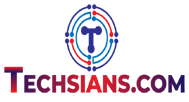In the ever-evolving landscape of the trucking industry, staying ahead of the curve requires more than just traditional management methods. Technology has become an incredibly useful ally, providing creative ways to improve productivity, optimize processes, and increase revenue. The possibilities are endless, ranging from route optimization to fleet monitoring. This comprehensive guide will delve into how technology can revolutionize the way you manage your trucking business, empowering you to navigate the road to success with ease.
Advanced Fleet Tracking Systems
Reducing costs and guaranteeing on-time delivery depends on efficient fleet management. Modern fleet monitoring systems use GPS to provide you with real-time insight into the whereabouts and conditions of your vehicles. It is possible to identify inefficiencies and make data-driven decisions to enhance efficiency by monitoring routes, speeds, and fuel usage. Enterprise fleet solutions now come with abilities like geofencing, which lets you create virtual borders and get notifications when cars approach or leave pre-designated zones.
With the help of cutting-edge fleet monitoring technology, you can maintain operational control and react quickly to changing conditions to guarantee optimal effectiveness and customer satisfaction.
Route Optimization Software
Optimizing routes is key to minimizing fuel costs, reducing mileage, and maximizing driver productivity. Sophisticated algorithms are used by route optimization software to determine the most effective routes depending on variables, including delivery timetables, traffic patterns, and road conditions. You can ensure on-time delivery and client satisfaction by automating this process and saving time and money. Furthermore, route optimization software enables you to account for factors like weight and vehicle size constraints, guaranteeing legal compliance and avoiding costly fines. With route optimization technologies at your disposal, you can increase driver productivity, simplify operations, and eventually boost profitability.
Telematics Solutions for Vehicle Maintenance
Keeping your fleet well-maintained can help you avoid failures, save downtime, and increase the longevity of your cars. Because telematics systems provide real-time data on engine performance, fuel economy, and diagnostic codes, they provide a complete approach to vehicle maintenance. By keeping an eye on these data, you can identify possible problems before they become more serious and plan proactive maintenance to fix them. Furthermore, predictive maintenance features are provided by telematics systems. These features use sophisticated analytics to estimate component failure dates based on usage trends and wear and tear. You can maintain optimal fleet performance, save repair costs, and optimize maintenance schedules by using telematics technology.
Electronic Logging Devices (ELDs)
Keeping a trucking company in compliance with Hours of Service (HOS) laws is essential. Drivers’ hours are automatically recorded by Electronic Logging Devices (ELDs), which guarantees adherence to HOS laws and regulations. ELDs lower the possibility of infractions and fines by substituting electronic records for conventional paper logbooks and eliminating the possibility of mistakes and fabrication. ELDs also provide you with real-time access to drivers’ duty status, which makes it easier to plan routes and keep an eye on their hours. You can increase compliance, expedite administrative work, and improve safety across your company using ELD technology.
Mobile Applications for Driver Communication
To coordinate deliveries, handle problems, and guarantee efficient operations, dispatchers and drivers must have effective communication. Real-time communication can be facilitated easily and effectively with the use of mobile apps. Through these applications, drivers can interact with dispatchers directly from their smartphones or tablets, submit status updates, and get assignments. Mobile applications assist in increasing overall productivity by streamlining operations and facilitating seamless communication while offering fast access to information.
Furthermore, several mobile apps include functions like document scanning and electronic proof of delivery, which increase efficiency and reduce administrative work.
Performance Optimization with Data Analytics
In order to maximize performance and promote ongoing development in trucking operations, data analytics are essential. You can find trends, patterns, and opportunities for development by examining data on variables like fuel use, vehicle utilization, and driver behavior. With the predictive powers of advanced analytics technologies, you can more efficiently plan routes, estimate demand, and distribute resources. Furthermore, data analytics can assist you in finding ways to save costs, including improving your fuel-buying tactics or cutting down on idle time. You can increase operational effectiveness, make more informed decisions, and eventually grow your trucking company by using data analytics.
Conclusion
In conclusion, technology offers a myriad of opportunities to revolutionize the way you manage your trucking business, from advanced fleet tracking systems to route optimization software and telematics solutions. By embracing these technologies, you can streamline operations, enhance efficiency, and drive profitability in today’s competitive market. With the right technology solutions in place, you can navigate the challenges of the trucking industry with confidence and achieve long-term success.

